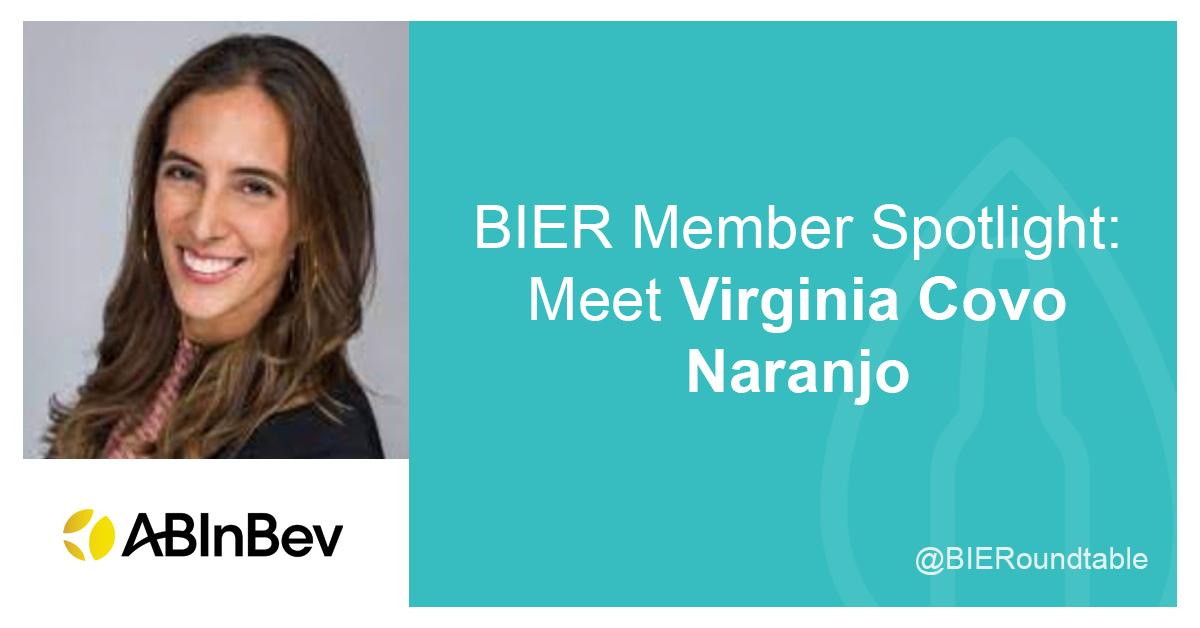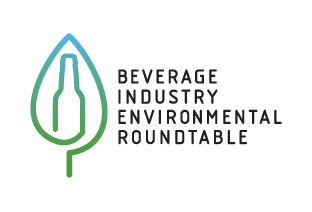BIER Member Spotlight: Virginia Covo Naranjo
Meet Virginia Covo Naranjo

Name: Virginia Covo Naranjo, Global Director Climate Action
Company: Anheuser-Busch InBev
Connect with Virginia on LinkedIn and Twitter
Welcome to our series aimed at spotlighting the individual leaders within BIER member companies and stakeholder organizations. Learn how these practitioners and their companies are addressing pressing challenges around water, energy, agriculture, climate change, and what inspires each of them to advance environmental sustainability in the beverage sector and collectively, overall.
Briefly describe your role and responsibilities and how long you have worked with your company.
I'm the global director of climate action at AB InBev, the world’s leading brewer. I've been with the company for six years and I've been leading our climate agenda for the past four years. I oversee our climate strategy including our 2025 Climate Action Goal, which is to reduce our emissions by 25 percent and work towards our science-based targets, as well as overseeing our ambition to achieve net zero by 2040 across our value chain.
My role involves looking at risks and opportunities from a climate perspective, and asking, “What does that mean for our business?” To do that, I work with a cross-functional team across the organization including agriculture, product cooling, coolers, energy, logistics, as well as our suppliers. Specifically questioning, “How do we engage our supply chain in decarbonizing and joining us in this journey?”
How has the company's sustainability program evolved over the years, and what are your specific priorities for 2022?
Our sustainability journey has evolved over the past decade as has the ESG agenda in the world. In 2018, we announced our ambitious 2025 sustainability goals which focuses on smart agriculture, water stewardship, circular packaging, and climate action. These goals cover significant material issues and where we can drive local change. Our business relies on a natural environment and we seek to drive economic growth as we solve some of the most pressing issues we face. Shortly after, we launched the 100+ Accelerator program, which partners with startups to capture innovative ideas to accelerate inclusive sustainable growth through innovation.
This past year, in 2021, we took another step in our sustainability journey with Ezgi Barcenas now serving as our Chief Sustainability Officer which elevated the ESG agenda within the organization. December 6, 2021, was an important day for us all as we unveiled our new logo, announced our New Purpose, and also announced our ambition to achieve net zero by 2040.
Collectively, we dream big for a future with more cheers. This vision understands the need to organize for the future. A future that is resilient and drives local and inclusive growth. Climate risks and opportunities inform our short and long-term climate strategy, and we are continuing to focus on action now, while also setting the right direction as we move forward.
Over the course of our journey, the focus shifted from looking within our own organization to questioning what does sustainability mean to the world and what is the impact we have as an organization? Although we are a large organization, we are very local. What I mean by this is that is our supply chains and our customers are local, and we have a huge impact on the communities in which we operate. Therefore, we have a big responsibility with those communities. This propelled our ESG agenda to include a more holistic view, not just looking at social and environmental but how these two elements are intertwined. Therefore, perceiving the climate crisis as a social problem as well, since it impacts human rights and vulnerable communities.
One of our 2025 goals is to have 100% of our direct farmers connected and financially empowered. We work with more than 22,000 farmers across the world producing different crops, including barley, rice, corn, cassava, sorghum, and hops. To meet our goal, we are providing our farmers with tools and a financial identity through different initiatives. By giving our farmers a financial identity, they are part of the system and we can advance their skills through our smart agriculture program. Ultimately, the farmers are learning about proper, sustainable agricultural practices. For example, if we are able to educate farmers in a region like Africa then they are able to increase the yield. So, if you increase effectiveness per hectare, that contributes to our ambition to achieve net-zero ambitions and also contributes to achieving net-zero for the world. This pulls it all together in illustrating how ESG elements are intertwined.
Learn more about Virginia Covo Naranjo in this BIER Member Spotlight.

